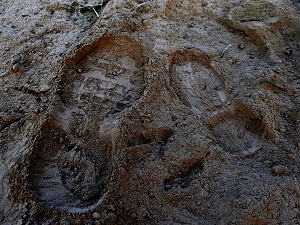
Last year, the United Nations proclaimed 2015 as the International Year of Soils. A whole year dedicated to dirt? Though it may seem simple, dirt is more important than many people might think.
Society does not appreciate dirt as much as it may deserve. It is often thought that dirt is cheap, repulsive, and worthless. In reality, dirt is a substance that keeps all living things alive and well.
If the whole Earth were to be covered in the dirt that exists on Earth today, there would only be enough to make a six-inch blanket. Based on the organic and mineral content that makes up dirt, it is split into 12 major orders, which are further divided into suborders, groups, subgroups, families, and series. One example is the dirt commonly found in backyards. Backyard dirt is a spodosol, Orthods Suborder, Haporthods Great Group, Typic Subgroup, and Tunbridge Soil Series.
Dirt's importance is further proven by the Biosphere II (B2) experiment conducted in the early 1990's. B2 was an air-tight greenhouse built in Arizona's barren desert. It was created by researchers to and replicate the original Biosphere, commonly called Earth. B2 housed eight humans and 3,000 species of plants, animals, and insects. It was split into seven smaller domes, each of which simulated a different environment. Each dome also contained a different type of dirt to suit its respective environment.
After some time, CO
2
levels in the domes shot up and the plants and animals died off. Only ants and cockroaches remained alive. The scientists behind B2 discovered the problem: the different types of soil were located in the wrong domes. Ultimately, then, the experiment showed that dirt must be in its specified environment to perform properly.
Dirt has been around for 450 million years. Unlike water, however, dirt doesn't have the ability to be recycled. Wind and water wash dirt into the ocean and atmosphere, where it is of no use to nature. The Earth can replace dirt, but not as fast as the elements can whisk it away. It would take 100 to 500 years to create a one-inch layer of topsoil over the Earth, but this figure is little compared to the amount of dirt that is naturally taken away. In India and China, dirt is being swept away 40 times faster than the Earth can replenish it; in America, 10 times faster. The facts are staggering.
Today’s soil is not in a good condition either. Low carbon levels in dirt mean that crops will be unproductive. Additionally, scientists calculated that the dirt we have now will last only 60 years. In 2050, the estimated nine billion people will not be able to live off of the little farmland that is left with proper amounts of soil.
Because humans are high on the food chain, many of us don't think much or often about lowly dirt. Even though its an ordinary substance, dirt is responsible for Earth's abundant life forms. And it's up to us to figure out a way to make sure this amazing substance is around for the long haul.
[Source:
National Geographic
]

